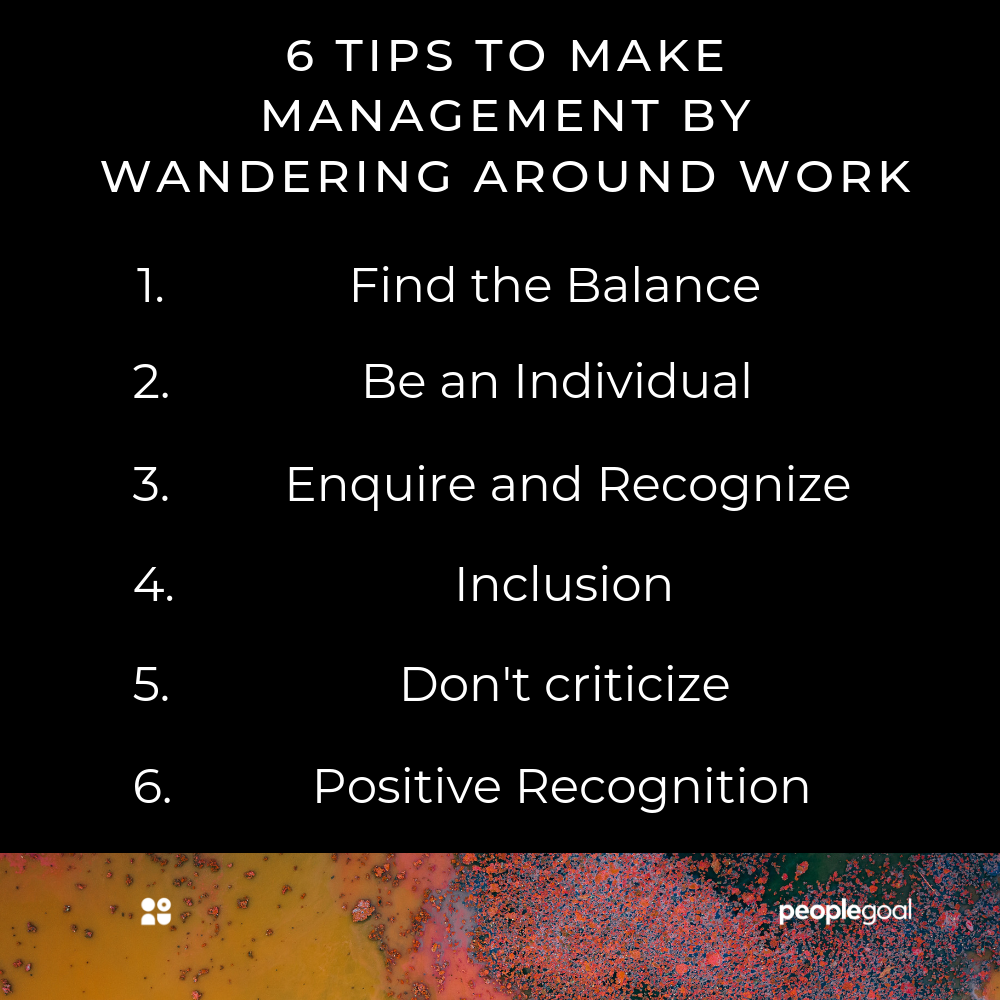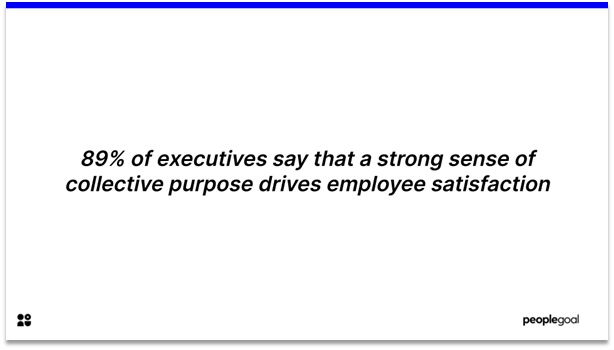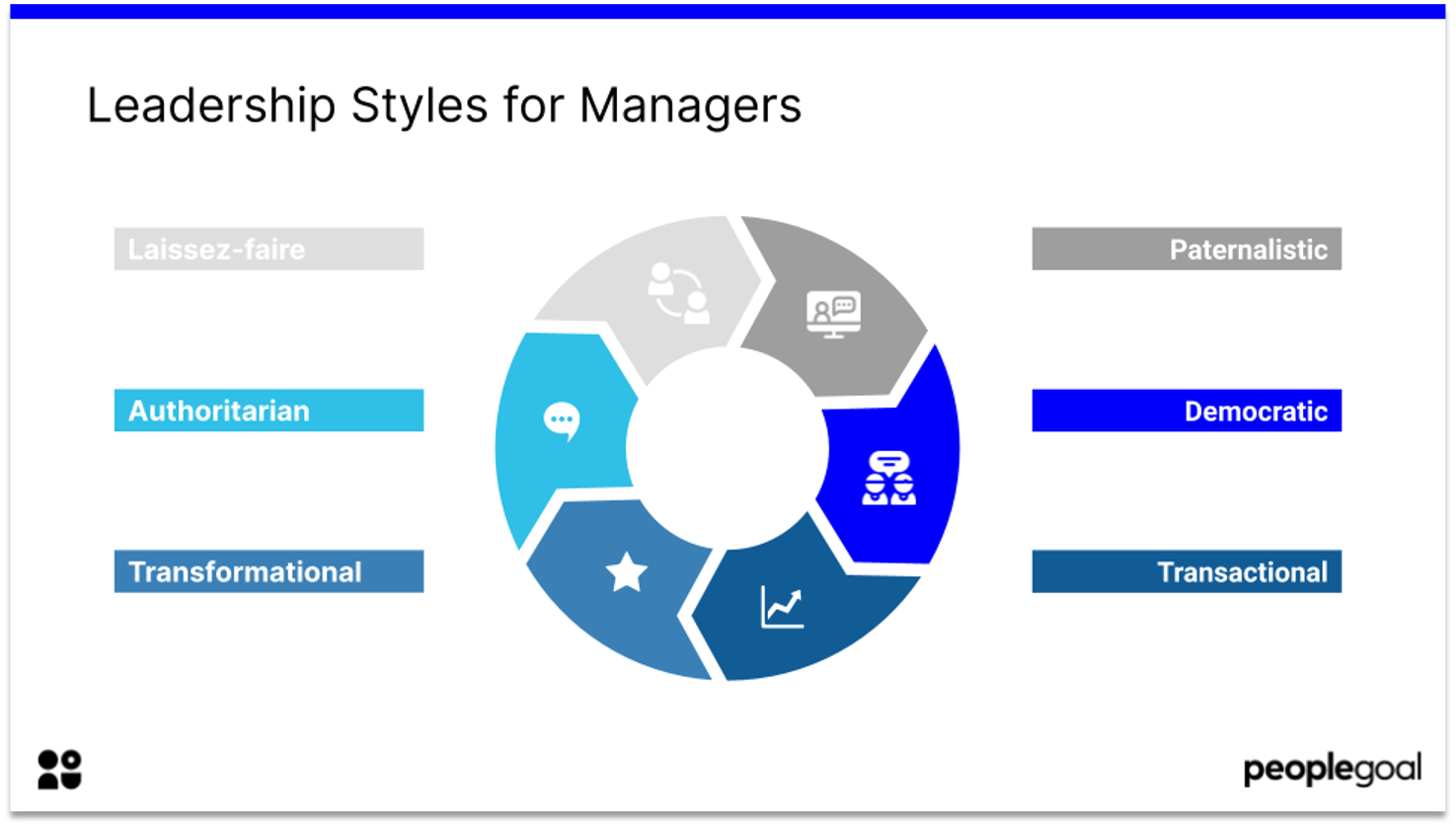Management by wandering around or walking around refers to a style of business management which involves the manager well – ‘wandering around’ – in an unstructured manner.
Now this doesn’t mean, walking around merely observing almost like some sort of overlord. Instead management by wandering around means that a manager walks around in an unstructured manner, at random times, to check-in and become active with employees, the workplace and current work. This style of management stresses the importance of wandering as an unplanned management tactic as opposed to a more systematic and scheduled approach from a manager.
The technique emerged in the 1970’s from the information technology company Hewlett-Packard, and was then the term was conceptualised by management consultants Tom Peters and Robert Waterman, in their book ‘In Search of Excellence’. Some notable business gurus who have utilised management by wandering around include:
• Andy Pearson (President of PepsiCo) – who reportedly would have discussions on a regular basis with a random junior manager to discuss processes and issues from their perspective.
• Steve Jobs (Co-founder and CEO of Apple) – who would often get his hands dirty, often responding to customer emails and phone calls to deal with their big problems personally.
• Howard Schultz (Founder and CEO of Starbucks) – who reportedly would visit 25 stores each week to discover what was going on at the heart of their operations. He would try and reinforce the values of the company whilst at each of the stores.
What are the benefits of management by walking around?
The expected outcome of management by wandering around is that by this irregular, random and unscheduled technique, there is an increased likelihood that this will facilitate improvements a range of improvements. These include:
• Increases in morale and motivation!
• Productivity boosts!
• Increased levels of employee engagement!
• Improvements in total quality management!
• Creating superior communication channels!
• Improving the relationships between employees and management!
• Improving organizational efficiency through instant feedback and problem resolution.
Are there any pitfalls to management by wandering around?
Like any other management theory, there are dangers to management by wandering around. Namely that it is:
• A time-consuming strategy. management by wandering around can take a lot of time out of the manager day. The act of walking around combined with actively engaging with the workforce takes time! This can seem like particularly wasted time if the manager gains very little from a conversation – which isn’t unlikely.
• Listening to everyone. One of the main focuses of the technique is to listen to a wide range of employees. With this focus on employees’ opinions, it is easy for management to overlook the opinion of other important groups, namely, customers and stakeholders.
6 tips to make management by wandering around work Successful
We’ve done the research for you and found six top tips to help you implement or improve your management by wandering around strategy. Here they are:

1. Find the Balance
The management by wandering around method requires systematic use and needs to be integrated into a manager’s routine. Management by wandering around doesn’t work if you decide you will do it when you feel you have time or if it becomes a form of micromanagement. Create an informal routine for management by wandering around. What does that mean? Well, the most effective method for management by wandering around is for you the manager, to get into an unscheduled routine of dropping in on the employee workspace. Don’t walk around every Tuesday and Thursday at 11:30am as this builds a systematic schedule for your walks, from which your employees can expect when you’ll be in their workspace. Instead say, I’m going to go down three times a week at a random time and if it happens to be Monday morning spice it up with some motivating quotes.
A good idea is to conduct management by wandering around every other day, and mix up your routine! Choose two or three times a week and at different times of the day. Visit different areas of the workspace (conditional on the size of your workspace of course!).
2. Be an individual
management by wandering around works best with one-on-one conversations. Don’t walk around with a crew of managers and assistants which may hinder the effectiveness of management by wandering around. Walking around with an entourage can often appear daunting for an employee who sees the group walking towards them.
3. Enquire and Recognize
Talk to employees about the issues they currently have and ask for suggestions as to where processes, products, services or sales can be improved. An employee may have a great idea which leads to a really positive outcome. Make sure that everyone knows that ‘any suggestion is a good suggestion’, and give make sure to give recognition where it is due.
4. Inclusion
Do not try and talk to everyone in one session! That would take you the whole day at the very least! Instead, talk to different people every time you engage in your management by wandering around routine until you have gone around the entire workplace. Spend enough time with each employee to make sure they feel included and valued.
Make sure you don’t keep going to the same employee because you like them more! Some employees will be more conversational, open and easier to talk to than others, but you can’t pick your favourites! Ensure that everyone’s voice is heard and recognize when a good point is proposed or when an issue is pointed out by an employee.
5. Don’t criticize
If you are walking around and find that an employee isn’t performing up to the required standard. Don’t jump in immediately and try and fix their behaviour. This displays a lack of professionalism, outing somewhat in front of their colleagues. Instead take a note of it, then at a later stage bring them in for a meeting and offer them constructive criticism or feedback. Or something more severe if the observed behaviour warrants it.
6. Positive Recognition
Instead of finding criticisms on the spot, try and find instances where you can give praise and positive recognition to an employee or employees. Provide positive or constructive feedback where needed. Recognition strengthens a range of workplace ingredients including motivation, engagement and morale.
So there you have it, a condensed guide to management by wandering around. If you are interested in this blog, you may like ‘7 Characteristics of a Good Manager’. Alternatively, you can check out our other blogs here or find out more about Management by Wandering Around.
Ready to 3x Your Teams' Performance?
Use the best performance management software to align goals, track progress, and boost employee engagement.






